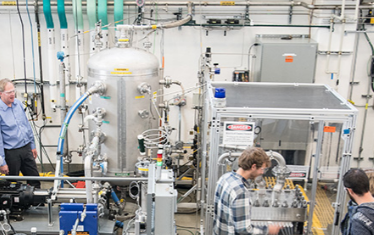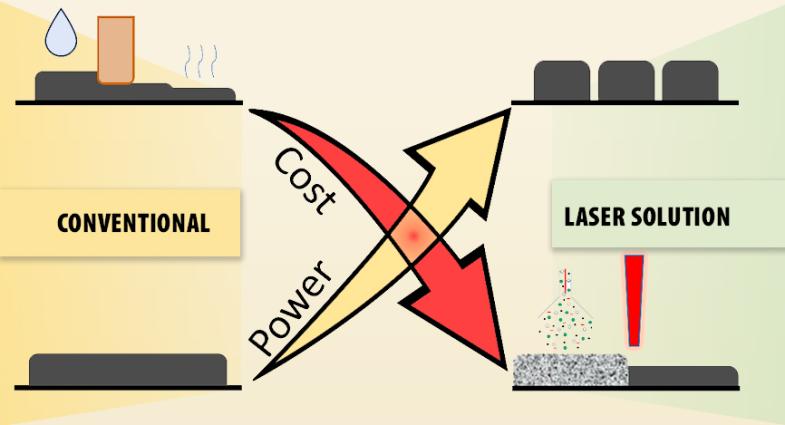2022-06-08 アメリカ合衆国・国立再生可能エネルギー研究(NREL)

・ NREL が、独自のエネルギーシステム統合施設の最新技術による、大型 (HD) 燃料電池車(FCEVs)システムへの高流量水素供給の実証に成功。同施設は、複雑化した現代のエネルギーシステムに適合し、画期的な新エネルギー技術開発に向けた統合的な研究活動を実施する研究プラットフォームである Advanced Research on Integrated Energy Systems (ARIES)の一部。2 年間の Innovating High Throughput Hydrogen Stations (IHS)プロジェクトの集大成となる。
・今回の成果は、輸送部門における脱炭素化を促進する HD FCEVs 開発とインフラの構築に向けた、米国エネルギー省(DOE)と産業界の目標に貢献するもの。NREL では普通(LD) FCEVsへの水素供給方法の研究を 10 年以上にわたり支援しているが、大型トラックや機械類は規模の異なる事業となる。
・ Air Liquide、Honda、Shell および Toyota と共同で実施する IHS プロジェクトでは、クラス 8 のセミトラ
ック、海洋、鉄道および鉱山用途を含んだ、高流量水素燃料システム開発の課題と技術的ギャップへの対処に取り組む。多様なアプリケーションや経済部門にまたがるクリーン水素に関する DOE の
H2@Scale のビジョンを支援する、DOE の水素燃料電池技術室(HFTO)が資金を一部提供する。
・ 同プロジェクトの最終的な目標は、ディーゼル車での約 10 分間の燃料補給時間 に匹敵する、FCEVs への水素供給時間の達成。水素ガス 100kg の最大貯蔵ポテンシャルで、LD FCEVs に使用される平均質量流量の約 10 倍の、10 kg/min の平均水素流量 (ピーク 20 kg/min )を目指す。
・ 本年 4 月に、同目標を超える成果となる、水素貯蔵タンク 8 基のバンク(HD FCEVs のものと同様)への 2.87 分間での 40.3 kg の充填で平均質量流量 14 kg/min (ピーク 21 kg/min) を実証。高速質量流量で 10 分以内に 60~80 kg の充填完了の最終的なマイルストーン達成の可能性を開く。
・ 新型の水素供給ステーション設計には、水素ステーションでの LD FCEVsへの水素供給をシミュレートする、高速、柔軟かつ自由に使用できる熱力学モデルである、NRELのHydrogen Filling Simulation(H2FillS)を活用。HD 要件と IHS プロジェクトに合わせた大幅な改善で、20~40 倍の高速化と圧力ランプレートパラメータの最適化を実施。現在、同モデルでは HD FCEVs の最適な燃料供給率を計算するための完全な水素燃料供給プロセスを調査中。
・ 今回の実証は、 (現在は存在しない)燃料供給プロトコル、安全性や規格を含む HD 水素システム研究拡大の道筋を拓くもの。この種の施設としては初となる NREL の HD ステーションは、現在市場にはない、管理されたサイトの高流量ノズルやレセプタクル等の HD 水素燃料供給用ハードウェアデバイスの安全性と信頼性の確保に向けた評価を可能にする。今後は、新ステーションの能力を活用してHD FCEV の燃料インフラ整備を支援する。
URL: https://www.nrel.gov/news/program/2022/fast-flow-future-heavy-duty-hydrogen-trucks.html
<NEDO海外技術情報より>
関連情報
ARIES 2021: Advanced Research on Integrated Energy Systems(フルレポート)
URL: https://www.nrel.gov/aries/annual-report-2021/index.html
関連情報
H2FillS: Hydrogen Filling Simulation
URL: https://www.nrel.gov/hydrogen/h2fills.html
Digital Twin Capability Provides Customized Approach to Port Modernization
Dallas/Fort Worth International Airport (DFW) wants to become one of the world’s cleanest and most energy-efficient hubs. It engaged NREL and ARIES to visualize that energy transition. With a digital twin of DFW operations, NREL researchers are helping the airport consider the effects of investments and decisions on passenger experience, energy use, and airport revenue before committing to a particular approach. This work leverages a larger effort, called Athena, to create an interactive analysis environment powered by NREL’s supercomputer and customized with data from actual airport activities. For the first time, data science and modeling and analysis are providing the world’s busiest hubs clear insights to help guide 20-plus-year investments in clean energy and efficiency.
Department of Defense Develops Renewable Microgrids Through ARIES Emulation
The ARIES platform hosts a technology acceleration program that pairs startups with energy mainstays to advance storage and microgrid solutions from concept to application. ARIES’ unique plug-and-play environment allows industry to quickly ramp up its real-world experience and vet its technologies against the challenges of true resilience events. Funded by the U.S. Department of Defense, the Environmental Security Technology Certification Program offers technical assistance to participants in the form of rigorous sink-or-swim validation rounds. Results of the program are released to the public so entities with critical loads can incorporate the latest solutions for energy resilience. With ARIES, critically resilient technologies can now experience the trials of a true emergency from the safety of the lab
Electric Vehicle Charging
NREL researchers are using a 750-kW electrolyzer integrated with ARIES hardware to show that grid-scale electrolyzers can reduce the uncertainty of electric vehicle charging demand. Electrolyzers are less sensitive to changes in power supply than other loads, making them a potentially useful technology to balance more jumpy loads, such as electric vehicle charging stations. In experiments that varied the number and power demand of electric vehicle chargers, researchers showed that the commercial electrolyzer could follow the erratic demand of charging, effectively smoothing overall demand while generating clean hydrogen for other applications. Findings from the project are important for the emerging topic of hydrogen-grid integration.



